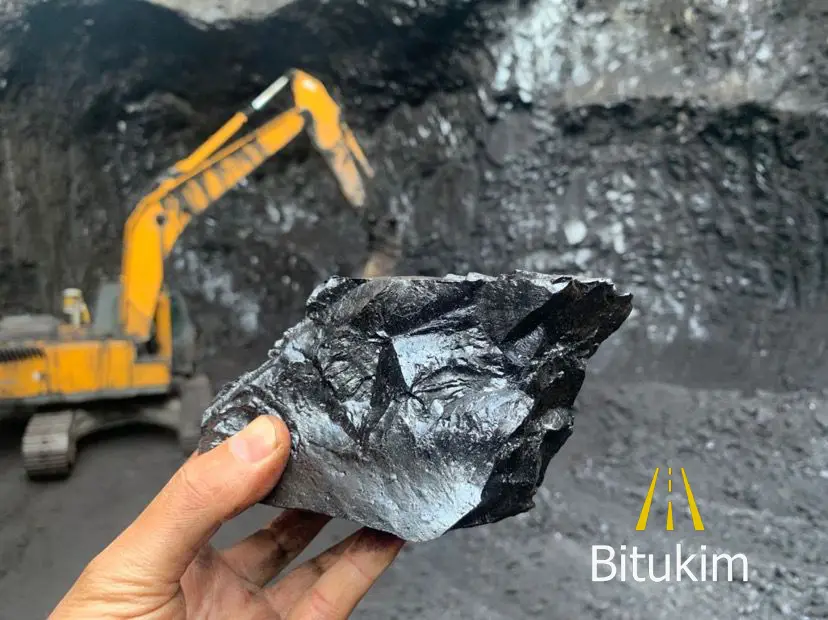 Gilsonite in water-based mud for shale stability, Gilsonite is highly effective when used in water-based mud (WBM) systems to enhance shale stability. Shale formations are often problematic in drilling operations because they tend to react with water, leading to swelling, sloughing, and other forms of instability. Adding Gilsonite to water-based mud helps mitigate these issues, ensuring a more stable wellbore.
Gilsonite in water-based mud for shale stability, Gilsonite is highly effective when used in water-based mud (WBM) systems to enhance shale stability. Shale formations are often problematic in drilling operations because they tend to react with water, leading to swelling, sloughing, and other forms of instability. Adding Gilsonite to water-based mud helps mitigate these issues, ensuring a more stable wellbore.
How Gilsonite Enhances Shale Stability in Water-Based Mud:
- Formation of an Impermeable Barrier:
- Gilsonite forms a thin, impermeable barrier on the surface of the shale when included in water-based mud. This barrier prevents water from the drilling fluid from penetrating the shale, reducing the hydration of clay minerals that typically cause swelling and instability.
- Sealing Micro-Fractures and Pores:
- By plugging micro-fractures and pore spaces within the shale, Gilsonite prevents fluid invasion into the formation. This sealing action helps maintain the mechanical strength of the shale, preventing it from breaking apart or collapsing.
- Inhibiting Water-Sensitive Clays:
- Shales often contain water-sensitive clays like smectite, which expand when exposed to water. Gilsonite reduces the interaction between these clays and the water-based mud, inhibiting the swelling and dispersion that can destabilize the wellbore.
- Reducing Fluid Loss:
- Gilsonite acts as a fluid loss control agent, reducing the amount of drilling fluid lost to the formation. This helps in maintaining the desired mud properties and pressure balance in the wellbore, contributing to overall stability.
- Improving Lubricity:
- Gilsonite provides additional lubricity to the drilling fluid, which reduces torque and drag on the drill string. This is beneficial in maintaining smooth drilling operations, especially in directional or horizontal wells where shale instability can increase friction.
- Enhancing Mud Rheology:
- Gilsonite improves the rheological properties of water-based muds, making them more effective at transporting cuttings and maintaining wellbore stability. The enhanced mud properties help in controlling the pressure profile and avoiding well control issues.
- Thermal Stability:
- Even in high-temperature environments, Gilsonite remains stable, making it a reliable choice for maintaining shale stability in deeper and hotter drilling conditions.
- Cost-Effective Shale Stabilization:
- Using Gilsonite in water-based mud provides a cost-effective solution for shale stabilization, offering significant advantages without the higher costs associated with oil-based or synthetic-based mud systems.
Benefits of Using Gilsonite in Water-Based Mud:
- Improved Wellbore Stability: Gilsonite helps maintain the structural integrity of the wellbore, reducing the risk of collapse and other instability issues.
- Reduced Non-Productive Time (NPT): By stabilizing the shale and preventing fluid loss, Gilsonite reduces disruptions and delays, leading to more efficient drilling operations.
- Environmentally Friendly: Water-based muds with Gilsonite offer a more environmentally friendly alternative compared to oil-based muds, with less impact on the environment.
Applications:
- Reactive Shale Formations: Gilsonite is particularly useful in drilling operations that encounter reactive shales, which are prone to swelling and instability when exposed to water.
- High-Pressure, High-Temperature Wells: Its thermal stability makes it suitable for challenging drilling conditions, such as HPHT (High-Pressure, High-Temperature) wells.
Using Gilsonite in water-based mud systems is a proven and effective method for managing shale stability challenges, providing a reliable solution for drilling through problematic shale formations.

